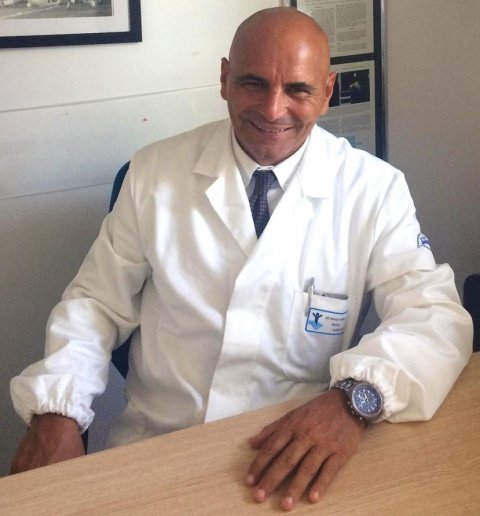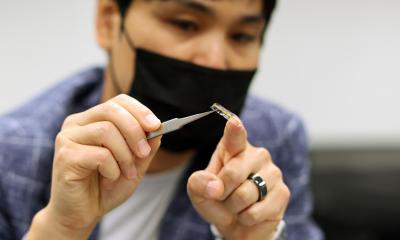Article • Freezing cardiology
Cryoablation – a safer therapy for children with arrhythmias
Freezing abnormal electrical pathways in the hearts of young patients may be a safer alternative to zapping them with powerful radiofrequency probes to treat tachycardias and other arrhythmias, according to Dr Fabrizio Drago, of the Bambino Gesù Hospital, Rome.
by Fabrizio Drago

‘If you have a child with a supraventricular tachycardia due to a re-entry circuit, or a target very close to the atrioventricular node, or the His bundle, try to do a cryoablation first. Then, if it is unsuccessful, you can do a radiofrequency ablation, if there are no other alternatives,’ he advised in his paper published in the Journal of the American College of Cardiology (JACC).
The use of a catheter probe chilled to -75º Celsius to destroy or ablate abnormal electrical circuits in adult heart arrhythmia patients is becoming increasingly popular, but Dr Drago’s work is the first study of its type to involve children. Currently, radiofrequency ablation, which uses a probe emitting very powerful electromagnetic energy, is the treatment of choice for these patients.
While usually effective, ablation of electrical pathways in the heart can create new problems, including atrioventricular block - an impairment in the transmission of electrical signals from the upper to lower chambers through the atrioventricular node. Whilst radiofrequency ablation is permanent, cryoablation has the potential advantage of being reversible during the procedure. Cardiologists can set the freezing probe to -30 Celsius and test its effect on the patient. If a problem appears in the heart’s electrical pattern, the probe can be removed and the chilled nerves can recover. If the test freeze appears successful, the probe temperature is then lowered to -75º Celsius to achieve a permanent ablation.
Twenty-six paediatric patients (age range 5 to 20 years) were treated; 16 had tachycardia and 10 had Wolff-Parkinson-White syndrome, a condition in which electrical signals to the heart’s pumping chambers arrive too early, thus interfering with normal pumping action. No permanent cryo-related complications or adverse outcomes were reported. The procedure was successful in 24 patients (92 percent). However, during follow-up (range: 1 to 22 months), arrhythmias returned in seven of these 24 patients.
When dealing with children, it’s better to do a procedure with a little lower success rate and no risks, than to carry out a procedure with a higher, long-term success rate, but with the risk, even if low, of severe complications
Fabrizio Drago
‘This report is important because it describes the first single-institution experience about the use of cryoablation in a paediatric population in an attempt to eliminate re-entry circuits located near the atrioventricular junction without any complications. This is the critical point,’ said Dr Drago. ‘Our acute success was very high, but we had many recurrences, maybe more than those reported in adult patients.’
However, Dr Drago considers the higher rate of recurrences is an acceptable trade-off for increased safety in young patients, compared with the usual experience with radiofrequency ablation. ‘We think that, when dealing with children, it’s better to do a procedure with a little lower success rate and no risks, than to carry out a procedure with a higher, long-term success rate, but with the risk, even if low, of severe complications,’ he explained.
The study was not a randomised, controlled trial, he added, and it did not directly compare cryoablation to radiofrequency ablation. It also reports the experience of only one hospital.
07.08.2006











